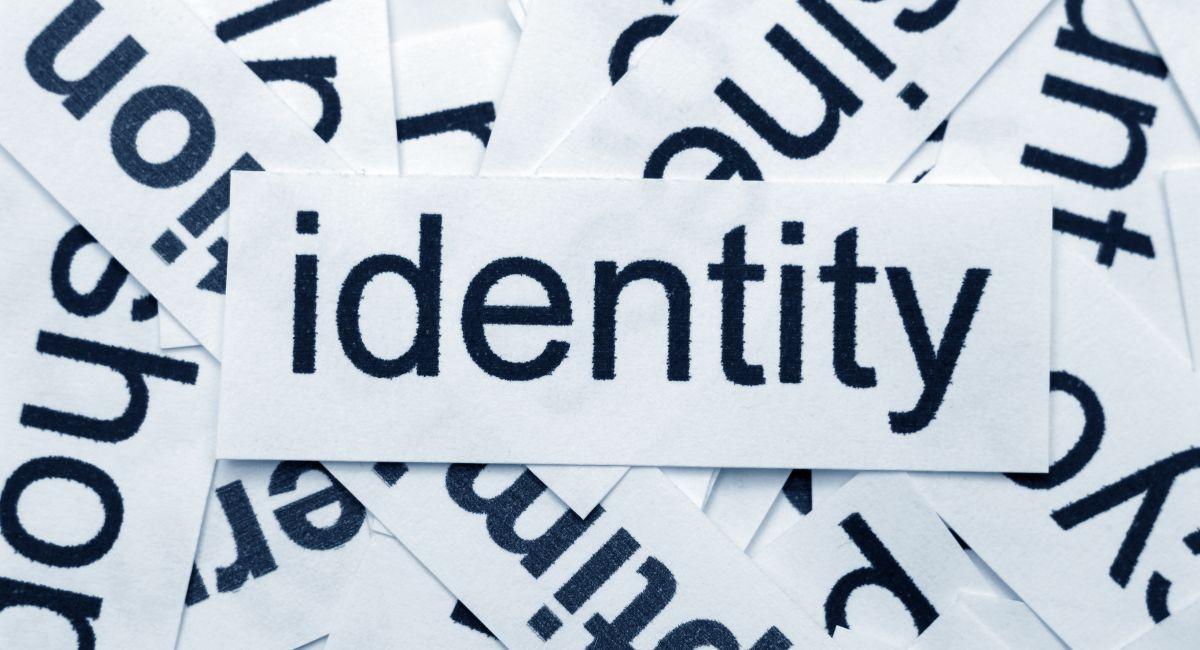Top 10 Commonly Asked Questions About Distributed Ledger Technology (DLT) Answered In Detail
Distributed ledger technology (DLT) is a decentralized digital system for recording and sharing transactions across multiple entities in a network. Unlike traditional centralized systems where data is stored and managed by a single authority,Distributed ledger technology distributes copies of the ledger to all participants in the network, creating a shared database updated simultaneously in real-time.
At the heart of Distributed ledger technology is the blockchain, a specific type of distributed ledger characterized by its sequential chain of blocks, each containing a batch of transactions. These blocks are cryptographically linked and secured through consensus mechanisms like proof-of-work or proof-of-stake, ensuring the integrity and immutability of the data. Blockchain’s transparency and tamper-resistant nature make it highly secure and trustworthy.
Distributed ledger technology offers several key features that distinguish it from conventional systems. Firstly, it eliminates the need for intermediaries by enabling peer-to-peer transactions, reducing costs, and increasing efficiency. Secondly, it enhances transparency as all transactions are visible to all participants, fostering trust and accountability. Thirdly, it enhances security through cryptographic techniques and consensus mechanisms, making it extremely difficult for malicious actors to alter or manipulate the data.
DLT has various applications across industries. In finance, it is revolutionizing payment systems, trade finance, and asset management by enabling faster, cheaper, and more transparent transactions. In supply chain management, it enhances traceability, reducing fraud and ensuring the authenticity of products. In healthcare, it secures patient records, streamlines data sharing, and enhances privacy. Additionally, DLT is being explored for voting systems, identity management, intellectual property protection, and more.
DLT also faces challenges such as scalability, interoperability, regulatory compliance, and energy consumption (in the case of proof-of-work blockchains). Despite these challenges, the potential benefits of DLT are vast, offering a paradigm shift in how we record, transact, and trust data in a digital world. As technology continues to evolve and mature, its impact on society and the economy is expected to grow exponentially.
Also, read- Unraveling The Top10 Blockchain Attacks And DLT Vulnerabilities
Importance of Distributed Ledger Technology

- Enhanced Security: DLT’s decentralized nature makes it highly resistant to cyberattacks and data manipulation. Every node on the network holds a copy of the ledger, making it nearly impossible to tamper with records.
- Increased Transparency: All participants can access and verify transactions on the ledger, fostering trust and accountability. This transparency is crucial in areas like supply chain management and financial transactions.
- Improved Efficiency: DLT can streamline processes by eliminating intermediaries and automating tasks through smart contracts. This reduces processing time and costs for businesses and organizations.
- Greater Traceability: Distributed ledger technology enables real-time tracking of assets and data throughout their lifecycle. This provides increased visibility and auditability in various sectors like supply chain management and logistics.
- Reduced Risk of Fraud: The tamper-proof nature of Distributed ledger technology minimizes the risk of fraud and errors. This is particularly beneficial in sectors like financial services and voting systems, where data integrity is critical.
- Financial Inclusion: DLT can promote financial inclusion by providing secure and accessible financial services to the unbanked population. This opens up new opportunities for individuals and businesses previously excluded from traditional financial systems.
- New Business Models: DLT creates opportunities for innovative business models based on trust and collaboration. This paves the way for disruption across various industries and the emergence of entirely new sectors.
- Streamlined Identity Management: DLT can offer secure and verifiable digital identities, simplifying authentication and authorization processes. This can enhance user experience and security in online interactions.
- Improved Governance: DLT can improve governance by providing secure and transparent platforms for recording and managing data related to processes like voting systems and land registries. This fosters trust and accountability in governance procedures.
- Data Democratization: DLT empowers individuals and organizations to have greater control and ownership of their data. This can lead to a more equitable and transparent data ecosystem in the future.
These are just some of the reasons why DLT is considered an important innovation with the potential to transform various sectors and aspects of our digital world.
The $XDC iceberg was a tough one to make.
— 🥖Tokenicer✲⥃⬢ (@Tokenicer) March 1, 2024
Realistically I could’ve put everything in the ecosystem beneath the surface, as they’re such an undercovered project.
But they are leading ALL of DLT in trade finance.
A multi-trillion dollar solution enabled by the digitalization &… pic.twitter.com/HVFyUcZX0W
10 Questions Answered About Distributed Ledger Technology (DLT)

- What is Distributed Ledger Technology (DLT)?
DLT is a system for recording information across a network of computers in a way that is:
- Distributed: Copies of the ledger are shared and synchronized across all participating computers, eliminating the need for a central authority.
- Immutable: Once recorded, data cannot be altered or deleted, ensuring the integrity and auditability of the information.
- Secure: Cryptography and other security measures are used to protect the data from unauthorized access or modification.
- What is the difference between DLT and blockchain?
While often used interchangeably, there’s a subtle distinction. Blockchain is a specific type of DLT that uses a chain of blocks to structure the data. Other DLTs might use different data structures, like directed acyclic graphs (DAGs).
- What are some real-world applications of DLT?
DLT has the potential to revolutionize various industries:
- Supply Chain Management: Tracking the movement of goods from origin to destination with increased transparency and efficiency.
- Financial Services: Enabling secure and efficient cross-border payments, recordkeeping, and asset trading.
- Voting Systems: Enhancing security and transparency in elections.
- Healthcare: Securely storing and sharing medical records while maintaining patient privacy.
- Is DLT secure?
DLT boasts strong security features due to its decentralized nature and cryptography. However, its overall security depends on various factors, including the specific implementation, network design, and security practices employed.
- What are the limitations of DLT?
Some challenges associated with DLT include:
- Scalability: Accommodating a large number of transactions while maintaining efficiency can be complex.
- Interoperability: Different DLT systems might not communicate seamlessly with each other, hindering widespread adoption.
- Regulation: The evolving nature of DLT poses regulatory challenges, requiring ongoing dialogue between industry and policymakers.
- Is DLT replacing traditional databases?
Not necessarily. DLT and traditional databases serve different purposes. DLT excels in trustless environments where a central authority is absent, while traditional databases remain efficient solutions for centralized data management.
- What are the different types of DLT?
Apart from blockchains, other DLT variations include:
- Directed Acyclic Graphs (DAGs): These offer faster transaction processing compared to traditional blockchains.
- Hashgraph: This technology focuses on achieving consensus through gossip protocols, potentially improving scalability.
- How can I learn more about DLT?
Numerous online resources, educational platforms, and industry events offer opportunities to deepen your understanding of DLT. Engaging with online communities and forums can further enrich your learning experience.
- What skills are valuable for a career in DLT?
Individuals interested in a DLT career can benefit from developing skills in:
- Cryptography: Understanding the encryption techniques used to secure DLT systems.
- Software Development: Familiarity with programming languages and distributed systems development.
- Business Acumen: Grasping the potential applications of DLT across different industries.
- What is the future of DLT?
DLT holds immense potential to reshape various sectors and transform how we interact with information. Continued research and development, addressing current limitations, and fostering collaboration are crucial for realizing the full potential of this innovative technology.
Importance of DLT in coming years
Distributed Ledger Technology (DLT) is poised to play a significant role in the coming years for several compelling reasons:
1. Enhanced Trust and Security:
- Reduced reliance on central authorities: DLT eliminates the need for a single entity to manage and control data, fostering trust and reducing the risk of manipulation or fraud.
- Improved data integrity: The immutable nature of DLT ensures data cannot be tampered with, providing a reliable and auditable record of transactions.
- Enhanced security: Cryptography and other security measures employed in DLT make it highly resistant to cyberattacks and unauthorized access.
2. Increased Efficiency and Transparency:
- Streamlined processes: DLT can automate workflows and eliminate manual reconciliation processes, leading to significant efficiency gains across various industries.
- Improved transparency: All participants in a DLT network have access to the same data, promoting transparency and facilitating collaboration.
- Reduced costs: Eliminating intermediaries and streamlining processes can potentially lead to cost reductions for businesses and consumers.
3. Enabling New Business Models:
- Emergence of new applications: DLT opens doors to innovative applications, such as secure and transparent online voting systems, fractional ownership of assets, and efficient cross-border payments.
- Disruption of traditional industries: DLT holds the potential to disrupt various industries, including finance, supply chain management, and healthcare, by creating new ways to manage and share information.
- Empowerment of individuals: DLT can empower individuals by giving them greater control over their data and enabling them to participate in new economic models.
4. Addressing Global Challenges:
- Promoting sustainability: DLT can be used to track the origin and movement of goods, contributing to sustainable practices and combating counterfeiting.
- Improving inclusivity: DLT can provide secure and reliable access to financial services for unbanked populations, promoting financial inclusion around the world.
- Enhancing supply chain visibility: Tracking goods through the supply chain with DLT can improve transparency, safety, and efficiency in global trade.
While challenges like scalability, regulation, and interoperability remain to be addressed, DLT’s potential to enhance trust, security, efficiency, and transparency positions it as a critical technology for shaping a more secure, collaborative, and innovative future in the coming years.
Conclusion
In conclusion, distributed ledger technology (DLT) represents a transformative force poised to revolutionize numerous industries and reshape the way we interact with data and conduct transactions. Its decentralized nature, epitomized by blockchain technology, promises enhanced security, transparency, and efficiency compared to traditional centralized systems. By eliminating intermediaries, DLT enables peer-to-peer transactions, reducing costs and processing times while enhancing trust and accountability through transparent and tamper-resistant record-keeping.
The applications of Distributed ledger technology span across various sectors, from finance and supply chain management to healthcare and beyond. In finance, Distributed ledger technology is streamlining payment systems, facilitating cross-border transactions, and transforming asset management practices. In supply chain management, it enhances traceability, authenticity verification, and efficiency, combating fraud and ensuring product integrity. Moreover, in healthcare, Distributed ledger technology secures patient records, enables seamless data sharing, and enhances privacy protection.
However, Distributed ledger technology is not without its challenges. Scalability, interoperability, regulatory compliance, and environmental concerns, particularly in the case of energy-intensive proof-of-work blockchains, pose significant hurdles to its widespread adoption. Addressing these challenges will be crucial for unlocking DLT’s full potential and realizing its promised benefits on a global scale.
Despite the obstacles, the momentum behind DLT continues to grow as businesses, governments, and innovators explore its capabilities and applications. As the technology matures and evolves, it has the potential to reshape entire industries, drive economic growth, and foster innovation in unprecedented ways. Embracing DLT requires collaboration, innovation, and a commitment to overcoming challenges, but the rewards of a decentralized, transparent, and efficient digital future are well worth the effort.
Stay informed with daily updates from Blockchain Magazine on Google News. Click here to follow us and mark as favorite: [Blockchain Magazine on Google News].
Get Blockchain Insights In Inbox
Stay ahead of the curve with expert analysis and market updates.
latest from tech
Disclaimer: Any post shared by a third-party agency are sponsored and Blockchain Magazine has no views on any such posts. The views and opinions expressed in this post are those of the clients and do not necessarily reflect the official policy or position of Blockchain Magazine. The information provided in this post is for informational purposes only and should not be considered as financial, investment, or professional advice. Blockchain Magazine does not endorse or promote any specific products, services, or companies mentioned in this posts. Readers are encouraged to conduct their own research and consult with a qualified professional before making any financial decisions.

 Bitcoin
Bitcoin  Ethereum
Ethereum  Tether
Tether  Solana
Solana  XRP
XRP  Dogecoin
Dogecoin  USDC
USDC  Cardano
Cardano  Lido Staked Ether
Lido Staked Ether  Avalanche
Avalanche  TRON
TRON  Toncoin
Toncoin  Stellar
Stellar  Shiba Inu
Shiba Inu  Wrapped stETH
Wrapped stETH  Wrapped Bitcoin
Wrapped Bitcoin  Polkadot
Polkadot  Chainlink
Chainlink  WETH
WETH  Bitcoin Cash
Bitcoin Cash  Sui
Sui  Pepe
Pepe  NEAR Protocol
NEAR Protocol  LEO Token
LEO Token  Litecoin
Litecoin  Uniswap
Uniswap  Aptos
Aptos  Wrapped eETH
Wrapped eETH  Internet Computer
Internet Computer  Hedera
Hedera  USDS
USDS  Cronos
Cronos  Ethereum Classic
Ethereum Classic  POL (ex-MATIC)
POL (ex-MATIC)  Render
Render  Bittensor
Bittensor  Ethena USDe
Ethena USDe  Arbitrum
Arbitrum  Artificial Superintelligence Alliance
Artificial Superintelligence Alliance  Celestia
Celestia  Dai
Dai  WhiteBIT Coin
WhiteBIT Coin  Filecoin
Filecoin  Bonk
Bonk  Stacks
Stacks  dogwifhat
dogwifhat  OKB
OKB 




